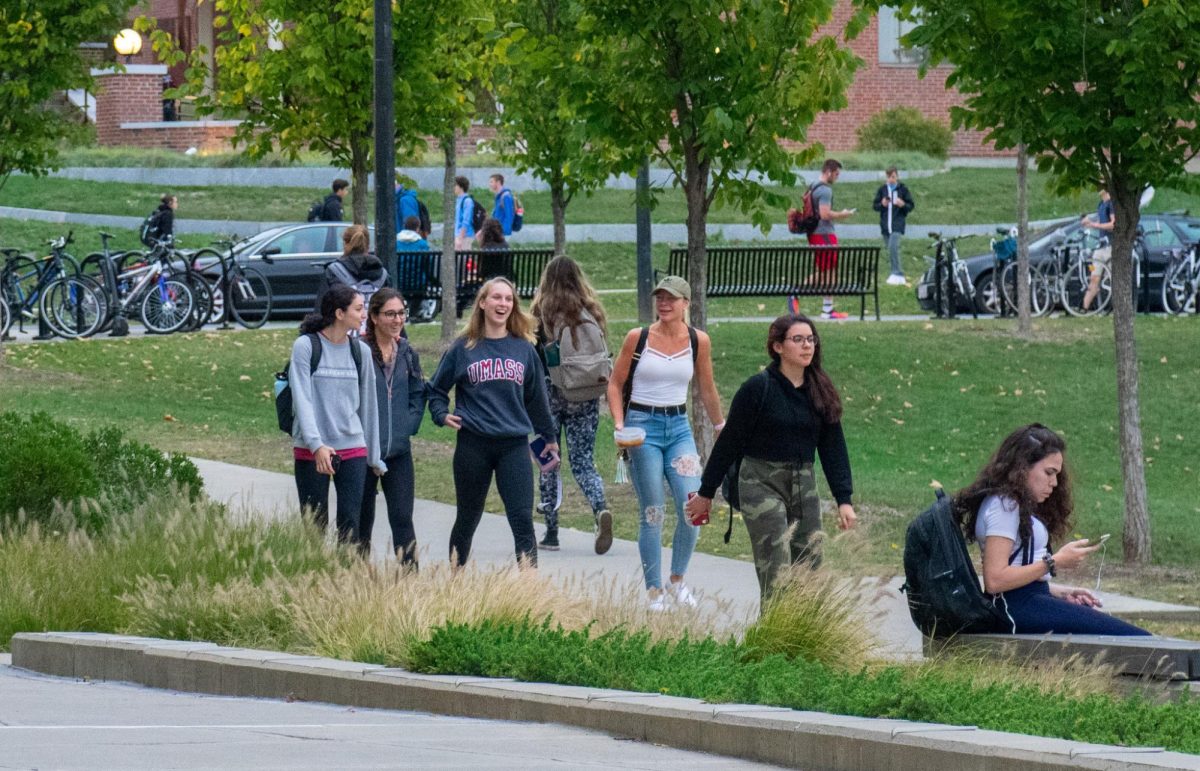 Swarms of people dart in and out of the stalls on the Amherst Common, which displays anything from glistening eggplants, plump tomatoes, bright white cheeses and organic meats to homemade soaps, wildflowers and a variety of handicrafts. A sign reading Amherst Farmers’ Market beckons townspeople and students alike to the quaint display of a vibrant local economy.
Swarms of people dart in and out of the stalls on the Amherst Common, which displays anything from glistening eggplants, plump tomatoes, bright white cheeses and organic meats to homemade soaps, wildflowers and a variety of handicrafts. A sign reading Amherst Farmers’ Market beckons townspeople and students alike to the quaint display of a vibrant local economy.
In the 36 years since its founding, the weekly farmers’ market has served as the epicenter for the local farming community, as well as a gathering place for Valley residents at large from May to November.
While at its core, the marketplace provides consumers the opportunity to peruse and purchase farm fresh and often organic foodstuffs, the pervading sense of community engagement and excitement about food astonishes visitors.
Initially organized to allow farmers to access a unified, locally based consumer group to sell their crops, the market lives on today to delight foodies from all walks of life.
Throughout the course of its existence, the market has also played an instrumental role in the development of the local food movement by allowing consumers to opt out of the industrial farming supermarket system. Lately, the “buy local” phenomenon has gained visibility as a trend in reaction to global food production.
As it stands, the average carrot travels 1,838 miles, passes through countless hands and spends most of its time ripening in a truck on its journey to your stomach, according to sustainabletable.org. Under this model, 82 cents of every dollar spent in a supermarket goes to various middlemen while just 18 cents of that dollar goes to the grower, according to localharvest.org.
Max Breiteneicher, the manager of the Amherst Farmers’ Market explains that the gargantuan industrial food supply chain compromises “quality of freshness, that’s huge with vegetables, but also quality of care.”
“When things pass through the distribution system to the A&P, or the Big Y, the integrity of the food is lost because it’s disconnected from where it was grown and the people that grew it… and that for me is a quality issue.”
The farmers’ market on the other hand helps to keep profits in the pockets of farmers, and in so doing promote the continued circulation of that money in the local economy. At the same time, it allows locals to connect to their food and where it comes from.
Call it old fashioned, because in fact, it is, especially in a region where farming traditionally has fed the livelihoods of area residents.
Feeding Hills based farmer John Spineti explains that the local food phenomenon took root in the fertile soil of the Pioneer Valley in the late ‘60s and early ‘70s.
“There has always been a drive for local food” here, but lately it has drawn “more of an emphasis because it’s safer and doesn’t consume as much energy to transport.”
“Amherst and Northampton have been ahead of the curve in that respect because we essentially established organic food practices with safety in mind for the consumers, for the producers and the environment.”
In addition to preserving the community by supporting local agriculture and voting with your dollar, buying local presents many other advantages to the consumer.
Maya Cramer, a Hampshire College freshman from New York City, exclaims, “farmers’ markets make me happy!”
“Everything is so fresh and it’s nice to know it’s from close by and right out of the ground. Everything just tastes better when it’s right out of the ground.” True to her words, none of the produce is waxed or stickered, but rather still dusty with dirt.
But eclipsing the fact that the market provides the freshest and highest quality produce available in the area, the pervasive sense of community that dominates the small patch of pavement on Saturday mornings offers townsfolk an intangible commodity.
The market “has this social element and as a result we get this enormous strata of people…from tenured professors to homeless people. It creates a cohesion to the town that doesn’t exist otherwise,” Breiteneicher says.
“These people across the board tend to be thoughtful and dedicated and when you have that experience it sort of ensouls the food in a way.”
Spineti echoes that feeling of community as well. Despite having received two advanced science degrees from the University of Massachusetts, he recalls feeling more connected to the student community through the farmers’ market than he did as a graduate student.
“I see more students than ever, now that I’m wearing a different hat, literally,” he jokes.
In the coming weeks Spineti hopes students come down to enjoy the harvest and perfect fall weather and offers the inside scoop on what to look for this Saturday.
He advises food lovers to keep their eyes peeled for juicy peppers, eggplants and potatoes, which have fared very well this season despite the heavy June rain. People can also look forward to healthy late crops such as broccoli, cauliflower, squash, beans, radishes and all kinds of greens including spinach, kale, mustard greens and all types of lettuce.
Local food enthusiasts should also mark their calendars for upcoming festivals including the 100 year Celebration at Cook Farm, the North Hadley Sugar Shack Open House at Boisvert Farm and the Fourth Annual Harvest Festival at Simple Gifts Farm and Amherst Community Farm, all taking place this Sunday.
Cal Scannell can be reached at [email protected].






